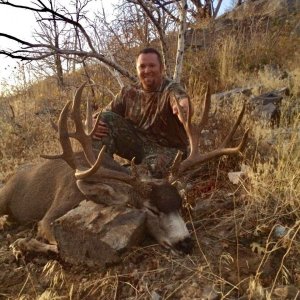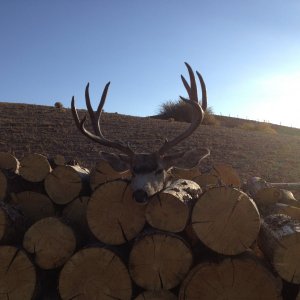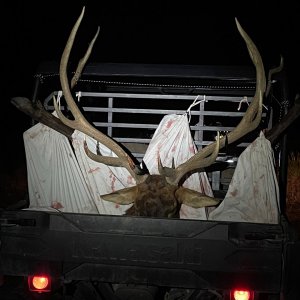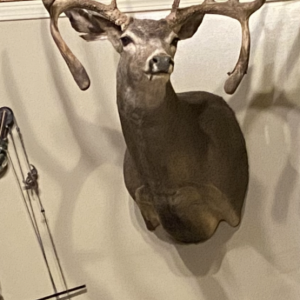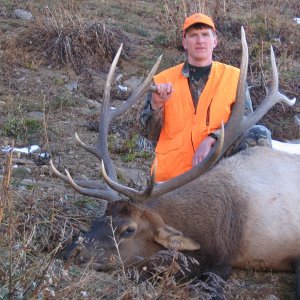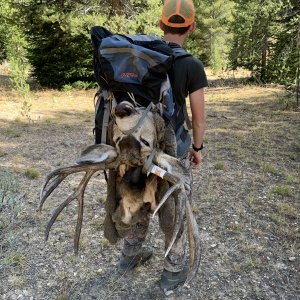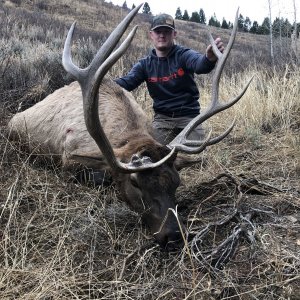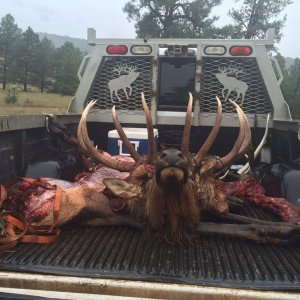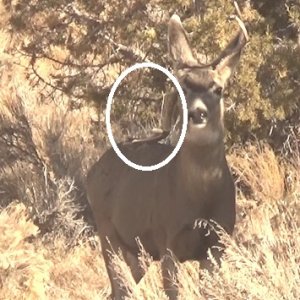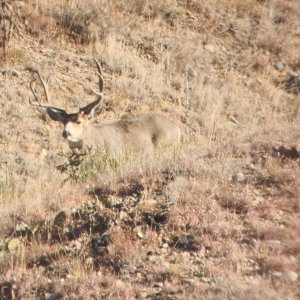I would look at two hunting forums: Pristine Adventures and The Alaska Outdoor directory. Run search functions on meat care or make a post.
Larry Barrett of Pristine Adventures has written and research meat care in Alaska during late August and September. Tempetures in the interior of Alaska during moose season can be in the 70's and it can be 5 days plus before one is able to get out of the field. Here a free article published by Pristine Adventures there e mail address and phones numbers. Call Larry before sheep season starts 8/10 and he is a very good and helpful person. There is much more than what is written here.
Why Use Citric Acid on Game Meat
Click Here to Download a PDF version of this article
The use of citric acid on game meat is a relatively new idea. Doug Drum of Indian Valley Meats in Indian, Alaska is the first person I know to have used it for this purpose. He developed its use in a product called "Game Saver."
This powder is simply a hefty dose of citric acid that can be reconstituted in water and applied to the surface of game meat as it is removed from the carcass. Citric acid is preferred over any other acid simply because it is safe for human consumption. In fact, food-grade citric acid is widely used as a preserving compound for fruits and vegetables. However, the scientific background which illustrates how this stuff works for hunters is not readily available. We have had to more or less trust in the wisdom of the product manufacturer.
That's not good enough for me. I have experienced varying results with the use of citric acid on game meat. I began to realize that the concentrations of the mixture and maintenance doses are critical to achieve the desired results. More on this later.
Today, there are a number of businesses that sell commercial-grade citric acid powder and tout it as a game saver. While doing the research for my own benefit, I came up with some interesting facts that helped me understand why and how to use citric acid for preserving the quality of wild game meat. I put this short article together based on the results of this study. In it I will discuss why and how hunters should use citric acid on game meat in the field.
It's all about the pH level
The term pH (or potential of Hydrogen) is used to express the degree of acidity of a substance. The pH scale is a quantitative way of expressing the active acid or alkali concentration of a solution. As the acid concentration decreases, the pH increases. At pH 7 the acid ( H3O+) and base ( OH- ) concentrations are equal. This is called the neutral point. The pH scale represents the number of places the decimal point is moved to the left of one in expressing the acid concentration, and each pH unit represents a tenfold change in H3O+ (acid) or OH- (alkaline base) concentration. For example, a solution at pH 6 is 10 times more concentrated in acid ions than a solution at pH 7. So what does all this scientific jargon mean? Well, let's carry that one step further and explain what it means to hunters.
Since we hunters are dealing with flesh and blood in the field, our goal is to keep flies and maggots off of our harvest, as well as to reduce the likelihood of bacterial growth. The pH level of the game meat determines the rate and level of negative results (i.e., maggots, bacteria, and spoilage). This will become more clear as we discuss why we use citric acid.
While the following example is rather grotesque, it illustrates how important the pH levels of animal flesh are. It sheds light on the extremes of decomposition that can occur with all game animals after the harvest. I'm sure that most hunters have at least seen bad things happen to good meat -- such as what happens to a carcass on the side of the road when it's allowed to remain in the heat. To the untrained eye, the effects are severe bloating and an infestation of maggots, but an understanding of what is happening behind the scenes and within the flesh can help us prevent this kind of waste in our big game harvests.
Bacteria, protozoa, microorganisms, maggots, mold, and mildew all require certain pH levels to survive. All of these living things continuously threaten the edible quality of our game meat after the harvest. Since blood has nearly the same pH as pure water (neutral pH 7 - 7.5), it becomes important to understand how the pH scale will help us understand, finally, why each of these organisms readily thrive on dead meat. And the longer and stronger we defend against them the better our game meat will taste once it is prepared for the table.
Flies
The blowfly is one of the first threats to our harvest because it quickly locates our kill site and begins to deposit eggs onto exposed meat surfaces. Within 24 to 48 hours those eggs transform into maggot larvae, which quickly become hungry, crawling maggots if allowed to remain. It is interesting to learn that even flies are sensitive to acid (pH levels). Some observers have suggested that maggot larvae require a pH environment higher than 6 to survive. The preferred range for blowflies to land on any surface is 6.5 to 8, but the higher the pH the better for them because maggots not only feed on meat but also on bacterial growth, and they thrive on the effects this growth has on decomposing flesh. Therefore, the more acidic (lower pH) the meat surface, the better the prevention of flies and maggots.
Giardiasis
Giardia is an organism that causes stomach problems and gastrointestinal irritation in humans when infected. The problem with this protozoan is that it is commonly found in Alaska's watersheds. It is most common in feces of animals like beaver, wolves, or even moose, and infects water sources when the animal deposits an infected stool into the water.
It is reasonable to believe that if our game meat comes in contact with Giardia -infected water, we then have a small chance of being infected ourselves after consuming that meat. While I've never heard of a single case to prove this belief, we must entertain the thought of the possibility and do what we can to prevent such an occurrence.
Surprisingly, even Giardia requires a certain pH to survive. It has been proven that Giardiasis becomes inactive in acidic environments, but exact levels are not known. However, what I have read suggests that the required "doses" of Giardia strong enough to infect most humans is not found on surfaces with a pH of 5 or lower.
Bacteria and Microorganisms
The variety of bacteria and other microorganisms that readily thrive on ill-guarded game meat is large. However, the effects are easily described by spoiled meat. Once again, pH levels determine to what extent bacteria and microorganisms can survive. Studies on compost material and goat carcasses revealed that breakdown of animal tissue is fostered when the pH is 6.5 - 8, but the rate of decomposition slows drastically with a pH of 5.5 and lower. However, you can't discuss bacterial growth and microorganisms without mentioning the other contributing factors that provide a perfect environment: moisture and heat.
Moisture
Moisture levels also determine the rate and level of bacterial growth, as water provides a perfect (neutral pH) environment for growing and spreading microorganisms. While it is nearly impossible to judge the percentage of moisture on the surface of our game meat, it is known that levels below 15% severely slow the rate of bacterial development. Therefore, it is clear that our goal is to reduce the amount of moisture in and around our game bags and meat. Simply, less moisture means slower growth of bacteria and microorganisms. With a drier environment, citric acid becomes even more effective in the prevention of bacterial growth, because we can create an acidic environment as a barrier of resistance against these microbial offenders.
Heat
We hunters know that we must keep game meat cool and dry, among other things. And while surface pH levels are critical for slowing the rate of bacterial growth, the temperature ranges and percentage of moisture also determine rates and levels of decomposition (spoilage). There are a couple of types of microorganisms that are defined by temperature ranges in which they thrive: mesophilic and thermophilic.
Mesophilic microorganisms are those that thrive in temperatures ranging from 50? to 105? F and thermophilic microorganisms prefer temperatures greater than 105? F. Therefore, the greater the meat temperature and the length of time it remains warm will determine the rate and level of bacterial growth down the line. Mesophilic microorganisms are the most common troublemakers we battle when the animal quarters are quickly removed from the carcass and rapidly cooled by removing the heat source (animal entrails and core body temperatures).
However, the length of time that it takes to remove the meat is important, such as when animals are lost for many hours before being found by the hunter. In warmer ambient temperatures, this scenario could mean disaster for the edible quality of that game meat, since thermophilic microorganisms are more aggressive than mesophilic. Meat left on the carcass remains at temperatures exceeding 105? F, as the natural post mortem process generates cellular heat with no method of cooling. Therefore, the longer meat remains on the carcass the greater the rate and level of bacterial growth and souring (spoilage).
All this discussion of heat and moisture simply illustrates the importance of initial steps that we must perform to prevent bacterial growth and development (spoilage), which include: 1) rapidly lowering the meat temperatures, 2) maintaining the meat at the lowest temperatures possible, and 3) using citric acid to provide an acidic environment.
Target effectiveness
The term "target effectiveness" is merely one I've chosen to define the pH level of our game meat that we should strive to achieve by the application of citric acid. After reviewing each of the contributing factors of game meat "spoilage," it is evident that pH 5 or lower can deter flies and slow bacterial growth and development on game meat. However, I believe it is safer to target pH 2 - 4 for a stronger barrier against many microorganisms. It is also important to stress it is futile to use citric acid without strict adherence to the basic principles of keeping game meat COOL, DRY, and CLEAN. The use of citric acid merely adds to the levels of protection we hunters create by diligence and commitment to these important rules.
When and How to Use Citric Acid
I recommend using citric acid immediately once game meat becomes exposed to the outside environment. I make it a practice to have a small spray bottle in my field dressing kit, which allows me to mix the citric powder and water to the desired concentration. I have it readily available while making the initial cuts to the animal, and while skinning back the hide and exposing the meat it is easy to spray all surfaces with a liberal layer of concentrated citric acid mixture.
The exact mixture ratio of citric acid powder to water is a matter of some dispute. I have found that Indian Valley Meats and Alaskan Game and Gourmet in Anchorage, Alaska recommends adequate concentrations of this powder, which have proven in my experience to be more effective against flies and obvious bacterial development than other brands. However, each company recommends a different mixture ratio. I have determined that the ratio varies with each manufacturer's citric blend, so it's somewhat difficult to pinpoint the most effective ratio of citric acid to water unless each brand is tested with a pH meter. With each company's blend, I have found that 1 oz powder to 1 qt water is most effective at achieving an initial pH of <3. Moreover, reapplying citric acid spray is crucial if hunters wish to maintain an adequate level of protection.
Reapplication
How often to reapply citric acid depends greatly on several factors: 1) moisture levels, 2) citric brand (concentration), and 3) mixture ratio (citric acid to water).
The safest method is to carry along a pH tester, which can be purchased at most pharmaceutical stores. Simply use the test strip to swab numerous points of the surface of your game meat and compare the results to the pH scale on the side of the bottle. This color scale indicates the acidity level of the test strip, which coincides with that of the surface area, thereby indicating the need for reapplication of citric acid spray. Remember that the target pH level is 2-4. However, if you don't want to go that far, simply reapply every day and every time game meat gets wet, using a highly concentrated mixture.
Game Bag Wash
Some experts suggest that hunters presoak each game bag prior to going afield. This is believed to help guard against flies and maggots. While this is may be true, I have found that it is nearly impossible to achieve the desired effective range (pH <5) to actually keep flies from landing and searching for holes in the bags.
Moreover, this method may imply to some hunters that if they choose to presoak their game bags they will not need to use the citric acid spray in the field. This is misleading. In fact, presoaked bags are useless if the wrong type of bag is chosen, as with cheese cloth-type game bags that tear easily. If the presoaked bag tears and game meat is not adequately dosed with citric acid, flies and bacteria will attack the meat. If hunters want to presoak their game bags, great! However, it is necessary to thoroughly cover every surface of the game meat as soon as it is removed from the carcass.
-Larry Bartlett
Author / Wilderness Guide
--------------------------------------------------------------------------------
ARTICLES:
Air Transport Nightmares..|..Float Hunting..|..Game Bag Study
GPS Now More Accurate..|..Legal Transfer of Game Meat..|..One Thin Line
Perplexities of Alaska Caribou..|..Plan Next Year's Hunt Today
Researching a River..|..Survive Your Next Hunt
Why Use Citric Acid on Game Meat
--------------------------------------------------------------------------------
Products :: Publications :: Inflatable Hunting Boats :: T.A.G. Bags :: Accessories
Adventure Services | Raft Rentals | Used Gear | About Us | Alaska Links
Photo Gallery | Free Articles | Contact Us | Chat Room | E-mail
Pristine Ventures
PO Box 83909 - Fairbanks, Alaska 99708
Toll Free Voice/Fax 877-716-4366
Email:
[email protected]



